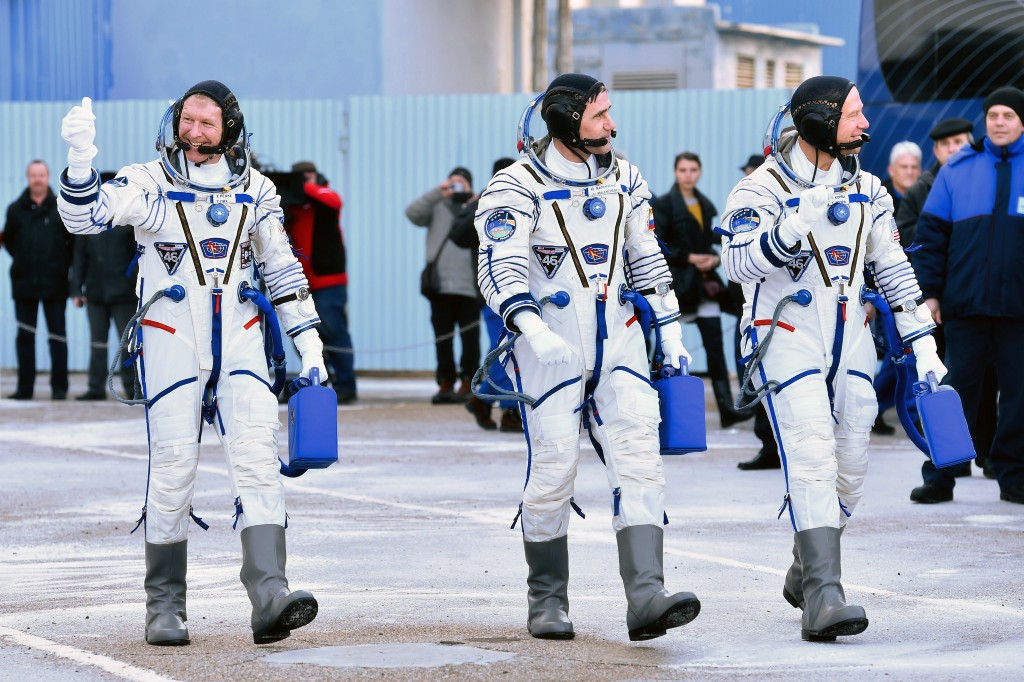The Science Of Having Sex In Space

What goes up must get down.
Last year, Elon Musk released his plan to send humans to Mars. As many critics have pointed out, Musk’s strategy for colonizing the red planet is heavy on space travel logistics but offers few insights into how humans will eat, live and repopulate once they arrive.
Human beings possess an innate fascination with sex, but nothing is more interesting to us than the idea of cosmic copulation. We’re intellectually titillated by the idea that what goes up must get off — but how? There’s surprisingly little information available on space sex, presumably because, according to NASA, it’s never happened before.
Since the first space flight launched in 1961, about 558 people have traveled through space. And it’s alleged — but not confirmed — that there has been at least one case of space sex: Russian cosmonaut Valeri Polyakov is rumored to have had an affair with fellow cosmonaut Elena Kondakova during his 437 day stint aboard the Mir space station during the 90s. Also in the 90s, the first married couple — Americans Jan Davis and Mark Lee — embarked on a space mission together. However, the two reportedly worked separate shifts and have refused to answer questions about their relationship while in space.
With no firsthand accounts to turn to, humans are left to ponder: How exactly does sex in space work?
Strap in

One of the most obvious issues with sex in space is overcoming gravity. In order for couples to connect, both physically and romantically, they’ll need to be tethered either to a wall or to each other. This problem can be solved by employing bungee cords, straps, handles or by donning a 2suit, a garment designed to facilitate intimacy in weightless environments. Invented by writer and actress Vanna Bonta, the 2suit boasts a front flap lined with Velcro strips that can attach to another 2suit, allowing space travelers the opportunity to come together (get it? Good, because now I hate myself).
Harry Stine, a former NASA technician and author of the book “Life in Space” has an alternative suggestion for how astronauts might go about getting down. In his book, he reminisces about simulating weightless sex in a buoyancy tank and writes that “It was possible but difficult,” adding that “[it] was made easier when a third person assisted by holding one of the others in place.”
Look out, Earth: threesomes just got a whole lot more practical.
Keep it simple
Nausea is a fairly common symptom for astronauts and one that can be severely exacerbated by ambitious sexual positions. Vanna Bonta, who wrote “Flight: A Quantum Fiction Novel,” spoke at the Space Frontier Foundation’s NewSpace 2006 convention and recommended that people “save the acrobatics for post-play vs. foreplay.”
Prepare to get wet
Sex is a naturally steamy undertaking, but sex in zero gravity is downright messy. When you sweat on Earth, the sweat rolls down your body, but in microgravity, that perspiration has nowhere to go. According to NASA astronaut Mike Hopkins, “The sweat actually sticks to you. It pools on your arms and head. It can pool and get in your eyes, too. If you are running, it does fling off onto the walls and stuff, and then you are cleaning the walls around you. So you have to towel off often to keep it under control.”
For a clear picture of what will happen to your sweat and other assorted body fluids in space, watch the above video and draw your own inferences.
Expect getting hard to be, well, hard
Humans experience lower blood pressure in microgravity, which means that, for some, getting an erection may prove difficult. But that doesn’t mean it’s impossible — astronauts have neither confirmed nor denied the idea of space masturbation, but presumably, it’s happened.
Ultimately, sex in space will be similar to sex on Earth, except with a lot more planning, careful choreography and a much greater need for towels.
